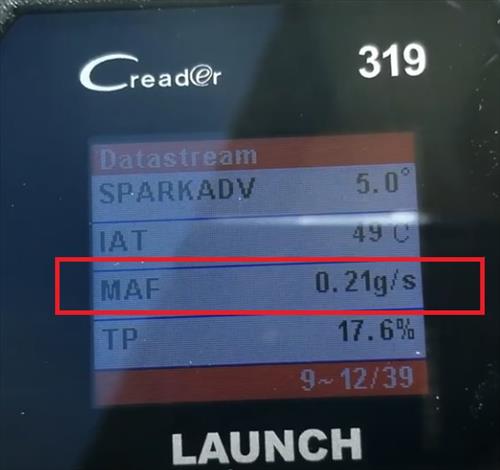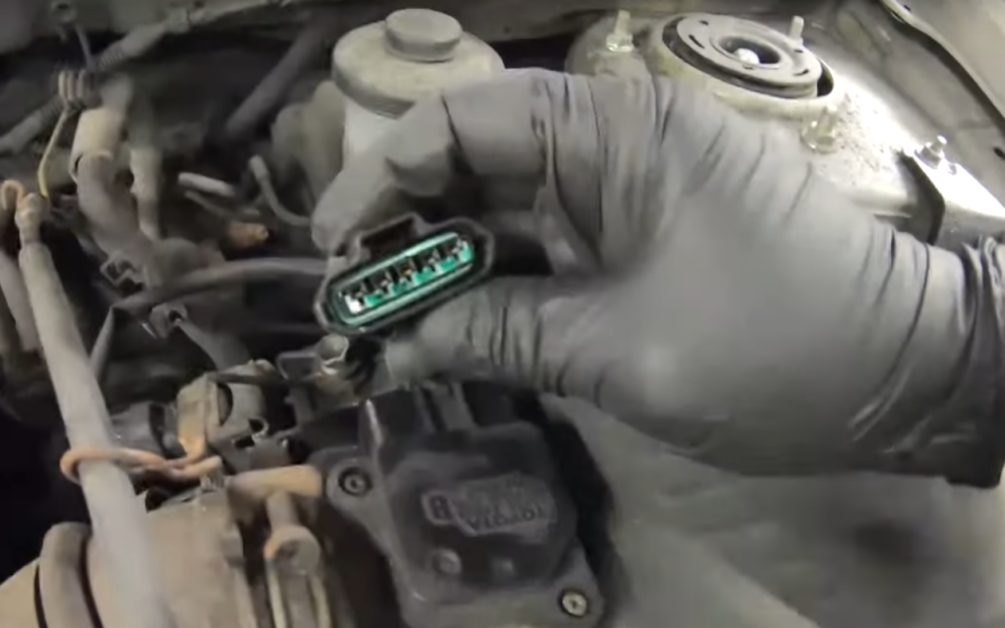Have you ever experienced a sudden drop in your car’s performance, sputtering engine, or a check engine light illuminating on your dashboard? These issues could be the result of a malfunctioning Mass Airflow (MAF) sensor, a crucial component in your vehicle’s engine management system.

Image: www.backyardmechanic.org
Diagnosing and testing your car’s MAF sensor can seem daunting, but it’s a crucial skill for any DIY enthusiast or car owner looking to save money on repair costs. Equipped with a multimeter and a little patience, you can accurately assess the health of your MAF sensor and determine whether it needs to be replaced.
Understanding the MAF Sensor and Its Importance
The Mass Airflow (MAF) sensor acts as a critical bridge between your engine and its electronic control unit (ECU). Its core function is to measure the amount of air entering the engine, providing this valuable data to the ECU for precise fuel injection and ignition timing calculations.
Imagine your engine as a hungry beast needing a specific blend of fuel and air to run optimally. The MAF sensor acts as a culinary expert, carefully measuring the air ingredient before sending it to the ECU, which then meticulously calculates and delivers the appropriate amount of fuel for combustion.
Common MAF Sensor Issues and Symptoms
When a MAF sensor fails, it can disrupt this delicate balance, leading to a variety of symptoms that might indicate a problem. Here are some common signs of a faulty MAF sensor:
- Poor fuel economy: A malfunctioning MAF sensor can lead to an incorrect air-fuel mixture, resulting in excessive fuel consumption.
- Engine hesitation or rough idling: An inaccurate airflow reading can disrupt the smooth operation of your engine, creating hesitation during acceleration or rough idling.
- Check Engine Light (CEL) illumination: The ECU often detects a faulty MAF sensor and illuminates the CEL, providing a clear indication of a problem.
- Reduced power and acceleration: A faulty MAF sensor can compromise the engine’s ability to generate adequate power, making it sluggish and lacking acceleration.
- Black smoke from the exhaust: An overly rich air-fuel mixture, caused by a malfunctioning MAF sensor, can create black smoke from the exhaust, indicating unburnt fuel.
What You Need to Test Your MAF Sensor
To accurately assess your MAF sensor’s performance, you’ll need a few basic tools.
- Multimeter: A multimeter is an essential tool for measuring voltage, current, and resistance. Look for a multimeter that offers both DC voltage and resistance measurements.
- MAF Sensor Replacement (Optional): If the sensor needs replacing, have a new MAF sensor on hand.
- Shop manual or online resources: Consult your vehicle’s specific shop manual or reliable online resources like forums and videos for instructions and connector pin locations.

Image: toolsweek.com
Step-by-Step Guide to Testing Your MAF Sensor
Now that you have the tools ready, follow these steps to test your MAF sensor.
1. Locate the MAF Sensor
The MAF sensor is typically found in the air intake system, near the air filter housing. Consult your vehicle’s repair manual or online resources to identify the precise location for your specific model.
2. Disconnect the MAF Sensor Connector
Carefully unclip the electrical connector attached to the MAF sensor. If the connector is difficult to remove, try gently wiggling it back and forth while applying a light pull.
3. Prepare Your Multimeter
On your multimeter, select the DC voltage setting. The specific setting will vary depending on your multimeter model, but typically you’ll need a range capable of measuring from 0 to 20 volts.
4. Measure the Voltage
Connect the positive (red) lead of your multimeter to the positive (+) terminal of the MAF sensor connector. Connect the negative (black) lead to the negative (-) terminal of the connector.
Observe the reading on your multimeter. A healthy MAF sensor should show a voltage reading between 0.8 and 1.2 volts when the engine is idling.
5. Check for Continuity
Switch your multimeter to the resistance setting. Typically, a range between 0 and 200 ohms is appropriate for testing MAF sensor resistance.
Connect the multimeter probes to the MAF sensor’s terminals, ensuring good electrical contact. A healthy MAF sensor should show a resistance reading of between 10 and 30 ohms.
6. Evaluate the Results
If your readings fall within the expected range, your MAF sensor is likely operating correctly. However, if the voltage is significantly higher or lower than the expected range, or if you experience a resistance reading outside of the specified parameters, there is a high chance your MAF sensor is faulty.
Other Testing Methods and Considerations
While using a multimeter is the most straightforward and widely available approach, there are other methods to test a MAF sensor.
- Using a Scan Tool: Scan tools offer valuable insight into the MAF sensor’s operation. These tools can read live data from the sensors, including the airflow measurements. A scan tool might reveal erratic readings or inaccuracies, confirming a faulty MAF sensor.
- Visual Inspection: In some cases, a visual inspection of the MAF sensor can reveal potential issues. Look for signs of dirt, debris, or damage to the wire mesh element within the sensor. These can all affect the sensor’s performance and require cleaning or replacement.
- Comparing to a Known Good MAF Sensor: If you have access to a MAF sensor from another identical vehicle, you can compare the readings of both sensors to determine if yours is malfunctioning. This method provides a direct comparison and can rule out any potential inaccuracies due to individual sensor variances.
Troubleshooting Tips
Here are some helpful tips to resolve MAF sensor issues:
- Clean the MAF Sensor: If you suspect dirt or debris is affecting the sensor’s performance, carefully clean the MAF sensor using a dedicated MAF sensor cleaner. Never use harsh chemicals or solvents, as they can damage the sensitive internal components.
- Check the Air Filter: A clogged air filter can restrict airflow and potentially affect the MAF sensor’s readings. Replace the air filter if it’s dirty or clogged.
- Inspect the Wiring: Examine the MAF sensor wiring for signs of damage, wear, or loose connections. Any issues should be addressed before diagnosing the sensor itself.
- Ensure Engine is Running Smoothly: A rough-running engine can influence MAF sensor readings. Make sure your engine is running smoothly before testing the MAF sensor.
- Seek Professional Assistance: If you’re unsure about any step of the process or if your MAF sensor consistently fails testing, it’s best to consult a qualified mechanic for professional assistance.
How To Test Maf With Multimeter
Conclusion
Testing a MAF sensor with a multimeter is a relatively simple and cost-effective troubleshooting method that can help you pinpoint the root cause of various engine performance issues. By understanding how the MAF sensor works, learning the testing procedures, and applying the troubleshooting tips mentioned, you can effectively diagnose a faulty MAF sensor and take steps to resolve the problem. Remember, accurate readings are key to confidently diagnosing a faulty sensor, so take your time, double-check your connections, and consult reputable resources for guidance. Good luck with your MAF sensor testing adventure!





